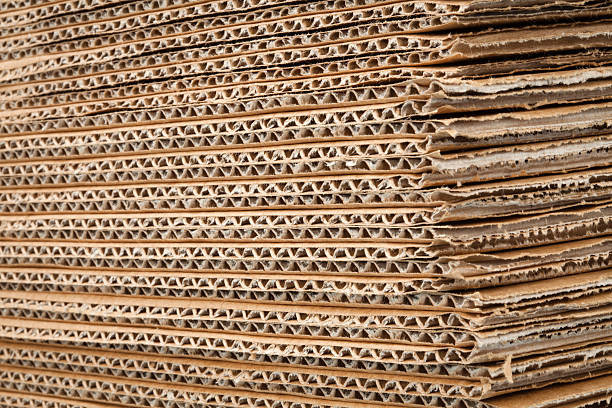Corrugator Adhesive Components and their Importance
There are a number of formulas for the production of corrugator adhesives and all of these adhesives have almost the same ingredients. These components are as follows;
- Water
- Starch
- Caustic Soda
- Borax
- Steam
- Water-resistant Resin
Water
Water acts as a solvent for starch in adhesive. Water is the best option for solvent because it is readily available at inexpensive rates. Water is the biggest ingredient by volume in the adhesive. Water is heated in presence of heat to dissolve the starch in the water. One molecule of raw starch can absorb water up to 20 times its weight and it can swell in volume nearly 100 times. Water is a medium for starch to travel from glue kitchen to adhesive tank and to medium paper. Water evaporates at the time of bonding, leaving behind starch to gel within the liner and medium paper.
Starch
Starch is the main ingredient for the bonding of adhesive with medium and liner. Starch is known for its adhesive nature. It can be soluble in water with the assistance of heat and chemicals such as Caustic soda. The main role of starch starts when water evaporates, and it is left behind to stick itself with paper fiber. The starch molecule is made up of amylose and amylopectin. A higher concentration of amylose assists in faster penetration of starch molecules in the paper. Higher content of amylose will result in a high percentage of green bonds, which means that corrugators can run at high speeds. Usually, starch molecules have 25 percent amylose and 75 percent amylopectin. There are a number of sources for starch, starch can be extracted from wheat, corn, potatoes, and rice. Corn starch is usually preferred because of its uniform granular size and stability to caustic soda.
Starch can be used in two different ways for manufacturing of adhesives. Some Corrugators use raw starch and carrier starch. In this process, carrier starch is first treated with caustic, heat, and water, and then added to raw starch. Modern-day Glue kitchen setup has eliminated these two steps and replaced them with a single starch process. In this process, all of the ingredients are added and mixed in a single tank and then transferred to a corrugator. This will be discussed later in detail in the glue process chapter.
Borax
Borax is a key ingredient in controlling the viscosity of adhesive. Borax is mined from the earth and exists in white granular powder. It provides a filmier structure so that adhesive can easily transfer to the applicator and doctor roll. It is acidic in nature; hence it provides neutralizing effect to caustic soda. Borax is also responsible for bonding within starch molecules and it ends up making a long chain of starch molecules. Borax is used for up to 0.7 % of total weight. There are two types of Borax; 5 mol and 10 Mol Borax. 10 MOL borax requires twice the amount of 5 MOL borax to achieve the same result.
Caustic Soda
Starch particles swell in the presence of caustic soda. Caustic provides stickiness and stringiest to starch molecules. Caustic raises the PH value of the solution resulting in lowering the gel point of the adhesive. Caustic can be used in two forms. One is to use it in dry powder form and the other is to use it within an aqueous solution. The aqueous solution is used twice as compared as the dry form in terms of weight. Caustic Soda is quite hazardous; hence it should be handled with Personal protective equipment.
Steam
Steam is the key component because it provides the optimum temperature for mixing the solution. Usually 40-43 degrees Celsius should be the temperature of the solution. Without steam we need a large amount of caustic soda to make the adhesive, this will increase the PH of the adhesive.
Water Resistant Resin
Usually normal starch adhesive splits its bond as soon as they are exposed to moisture. Some of the customers need moisture-free packaging and for this, we use resin which acts as water resistant. Resin molecules develop cross-links with starch molecules because they won’t let starch molecules dissolve with water. A general rule of thumb is to add 100 lb of resin per 700 gal batch. Care should be taken because excess amount of resin will affect viscosity and gelatinization temperature
-Haseeb Qausim Shift Engineer RPL

